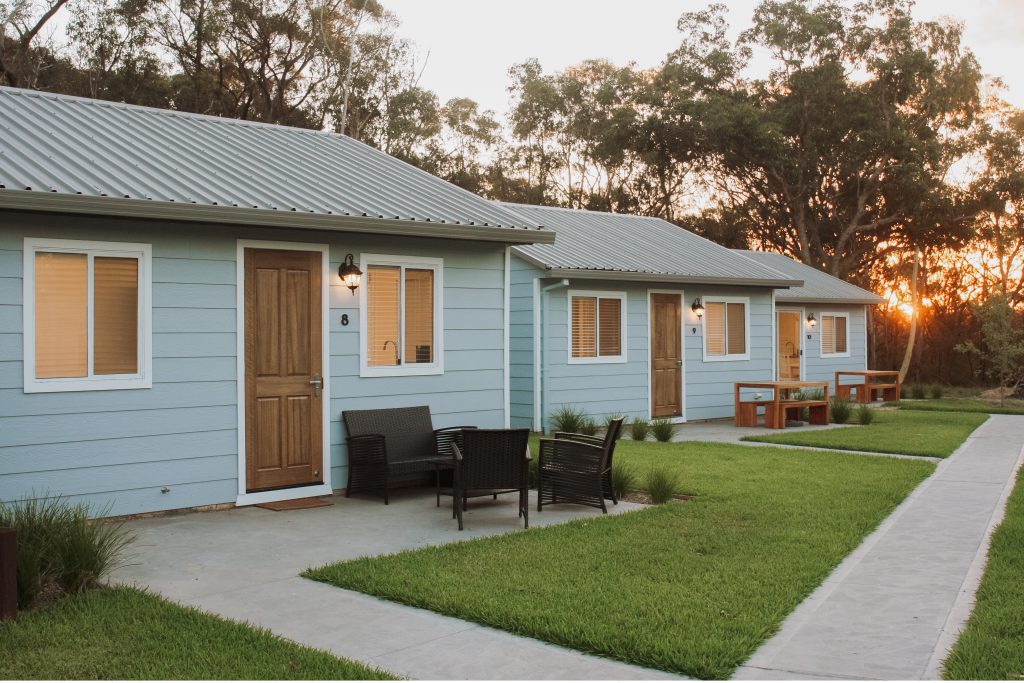
Wellness retreats have gained immense popularity in recent years as people seek to relax and recharge. Organising a successful wellness retreat requires careful planning and attention to detail so that everything can run as smoothly as possible. Let’s look at the essential steps to ensure your retreat is a resounding success, from selecting the perfect retreat location to creating a program that caters to the needs of your participants.
Define Your Vision and Goals
Planning a wellness retreat is an exciting challenge, and the first step is to define your vision and goals. This process helps you establish a clear direction and purpose for your retreat. Here are some tips to get you started:
- Reflect on your objectives: Take some time to think about what you hope to achieve with your retreat. Are you aiming to create a space for relaxation and rejuvenation, or perhaps you want to focus on promoting healthy lifestyles and personal growth? Identifying your objectives will shape every aspect of your retreat planning. Not sure what potential participants would like? Send out an online questionnaire beforehand to better understand their preferences.
- Consider your target audience: Reflect on who your ideal participants are. Are you targeting beginners, a specific age group, or a particular demographic? Understanding your target audience helps tailor your program and offerings to their preferences and expectations.
How to Host a Wellness Retreat
Selecting the right location is crucial to hosting a successful wellness retreat. The venue you choose will significantly impact the overall atmosphere and experience for your participants. When considering a location for hosting your wellness retreat, there are several key factors to keep in mind.
Firstly, look for a group accommodation venue that offers peaceful surroundings. Busy and bustling areas will likely defeat the purpose of feeling relaxed and refreshed. Seek out places that are known for their natural beauty, such as the country side or native bushland. As most of us would know, being surrounded by nature improves mental health, including reducing stress and improving mood, all of which are essential ingredients for a successful wellness retreat.
It’s also important to ensure that the venue has sufficient indoor and outdoor spaces to accommodate your retreat activities. Look for venues with spacious grass areas, a hall with advanced audio-visual technology for workshops, and comfortable seating areas for group sessions and relaxation.

What to Do at a Wellness Retreat
When it comes to designing a holistic program for your wellness retreat, there are several key aspects to consider.
- Identify core activities: Identify core activities that align with your retreat’s goals and theme. This could include yoga sessions, meditation practices, fitness classes, spa treatments, healthy cooking workshops, nature walks, or educational sessions on wellness topics. If your retreat caters to beginners, ensure that there are introductory sessions and modifications available to help keep every feeling comfortable and included.
- Create a balanced schedule: Have you ever experienced an event with an overly “crammed” program? Arrange your program in a way that allows for a balance between structured activities and free time. Offering a variety of sessions throughout the day, with breaks for relaxation allows participants to fully immerse themselves in the retreat experience.
- Collaborate with experts: Reach out to experienced instructors and wellness experts for advice, or you could even book them in to lead a session or run a wellness workshop. Collaborating with professionals who are knowledgeable and passionate about their respective fields will ensure high-quality sessions that provide valuable insights and transformative experiences for your participants. Consider their expertise, teaching style, and ability to connect with and inspire your wellness retreat guests!
- Finalise the program: First impressions matter! Design the wellness retreat program so that it is easy to understand. Rather than a simple bullet point list, format your program to make it visually appealing.
Retreat Accommodation and Facilities
When planning a wellness retreat, one of the key factors that contribute to its success is the provision of comfortable accommodation and essential facilities. Select a venue that offers clean, cosy, and inviting rooms where participants can relax and recharge. The rooms should be well-maintained, with comfortable beds and fresh linens. Additionally, consider whether the rooms are air-conditioned or have proper ventilation to ensure optimal comfort, especially in warmer months.
In addition to accommodation, it is important to assess the availability of essential facilities at the venue. An auditorium or a similar spacious common area can be used to run group activities, workshops, etc.
Meals are an important part of any group getaway. The use of fresh and nutritious ingredients can further underscore the wellness focus of your retreat. Ever visited a venue that has forgotten about your dietary requirements? Find a suitable venue that caters to various dietary preferences to accommodate all participants.
The availability of sports or recreational facilities may enhance the health and wellness aspects of your retreat. These facilities could include a swimming pool, a fitness centre or attractive outdoor spaces for yoga or meditation sessions. In addition to wellness retreats, Long Point Conference Centre is the perfect location for a yoga retreat in Sydney.
Attend to Logistics and Operations
Attention to logistics and operations is crucial to ensure a smooth and hassle-free retreat experience for both organisers and participants. Start by carefully planning transportation arrangements, ensuring that participants have clear instructions on how to reach the venue. If you are not directly responsible for organising transport, consider recommending public transport services such as taxis, buses or trains.
In addition to transportation, effective coordination with vendors is essential. Collaborate with trusted vendors to secure necessary equipment and supplies for the retreat. Plan ahead and ensure that all required items are available and in good condition before the retreat begins. Maintaining open lines of communication with vendors will help address any concerns or last-minute adjustments that may arise.
Another important aspect of logistics is handling registrations for the retreat. Streamline the registration process by providing clear instructions and user-friendly online registration platforms. Promptly respond to participant inquiries, providing helpful information and addressing any concerns or special requests.



Get Feedback
Throughout the retreat, encourage feedback from participants to gauge their experiences and preferences. This feedback can help you refine and adapt your program as needed, ensuring that it continues to meet the needs and expectations of your participants. Actively listen to their suggestions and incorporate valuable insights into future wellness retreats. After the event is over, send out a survey to get an idea of what people liked, what they didn’t like and what suggestions they have for another time.
Tips on How to Plan a Retreat
Planning a successful wellness retreat requires careful consideration of various factors, from the vision and goals to the location, program design and logistical arrangements. By following these steps and paying attention to the participants’ needs, you can create a transformative experience that leaves a lasting impact on their wellbeing.
Checklist
- Define your vision and goals (the purpose of your retreat)
- Choose the right location (peaceful and spacious)
- Design a holistic program (activities, schedule, special guests, the actual visual design)
- Arrange accommodation and facilities (comfortable with suitable amenities)
- Attend to logistics and operations (transport arrangements and vendor communication)
- Get feedback (listen to suggestions and improve for next time)
Retreat Venue Location Near Sydney
Looking for a relaxing retreat venue in Sydney? Or perhaps you’re organising a school camp or looking for family reunion accommodation in NSW? Long Point Conference Centre borders the Georges River bushland and is the perfect location for a peaceful, relaxing and fun-filled holiday or weekend away. Book your stay with us today!
